Poultry raising is not restricted to chickens only, and a pheasant farm is one of the relatable examples. In fact, I have also kept these game birds for meat.
Their meat, I think, is more than nutrients, with a demanding gourmet market and recipe experiments.
If you’re coming into this business, I suggest you go through my experience and this guide first.
Why Raise Pheasants for Meat?
Do you know pheasant meat is high in protein and low in calories?
It is full of rich minerals such as iron, zinc, vitamin B6, and selenium.
Pheasant meat has fewer calories than beef. You can expect a 3-ounce pheasant to contain only 114 calories and 3.1 grams of fat with 0 carbohydrates.
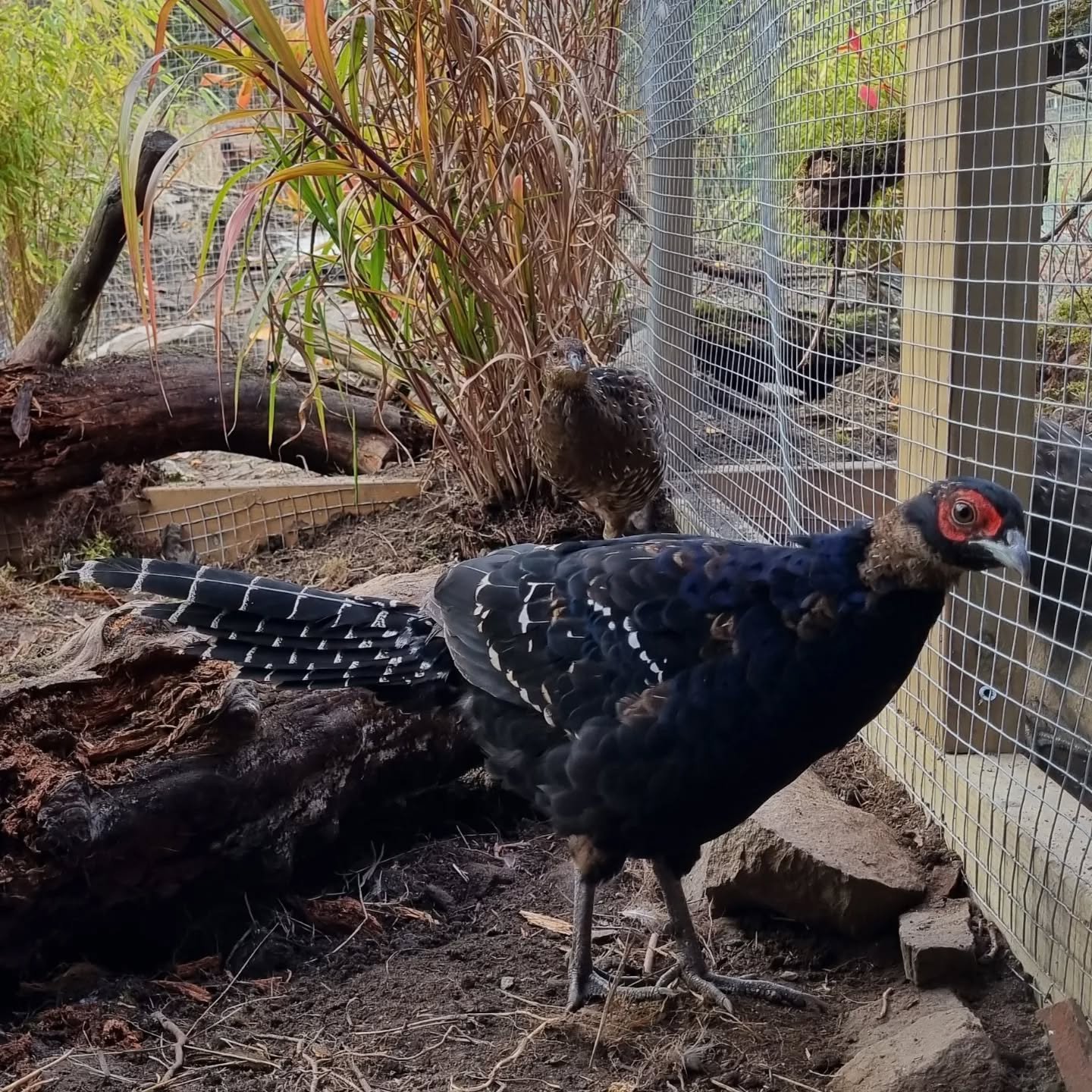
This is lower in fat and cholesterol than duck and chicken, making it a healthier alternative to red meat.
As game birds, pheasants taste gamey but not like duck.
Their meat is often in high demand in gourmet markets. They are great for roasting or casseroling or as their breast fillets for quicker cooking.
I guess their breasts contain maximum meat, around 75%.
They have a market weight anywhere between 3.6 and 5 lbs. And 2 – 2.75 lbs whole pheasant will cost around $40.
You can raise these birds and butcher them in 12 to 14 weeks. Thus, pheasants can be a sustainable and self-sufficient meat source for homesteaders, and they also have other benefits.
Pheasant Breeds
Ring-necked Pheasants
This is the most common pheasant raised on farms and homesteads.
The male birds have brown and heavily barred feathers with a mix of gold and copper. They have green and purple head and bright red skin around their eyes.
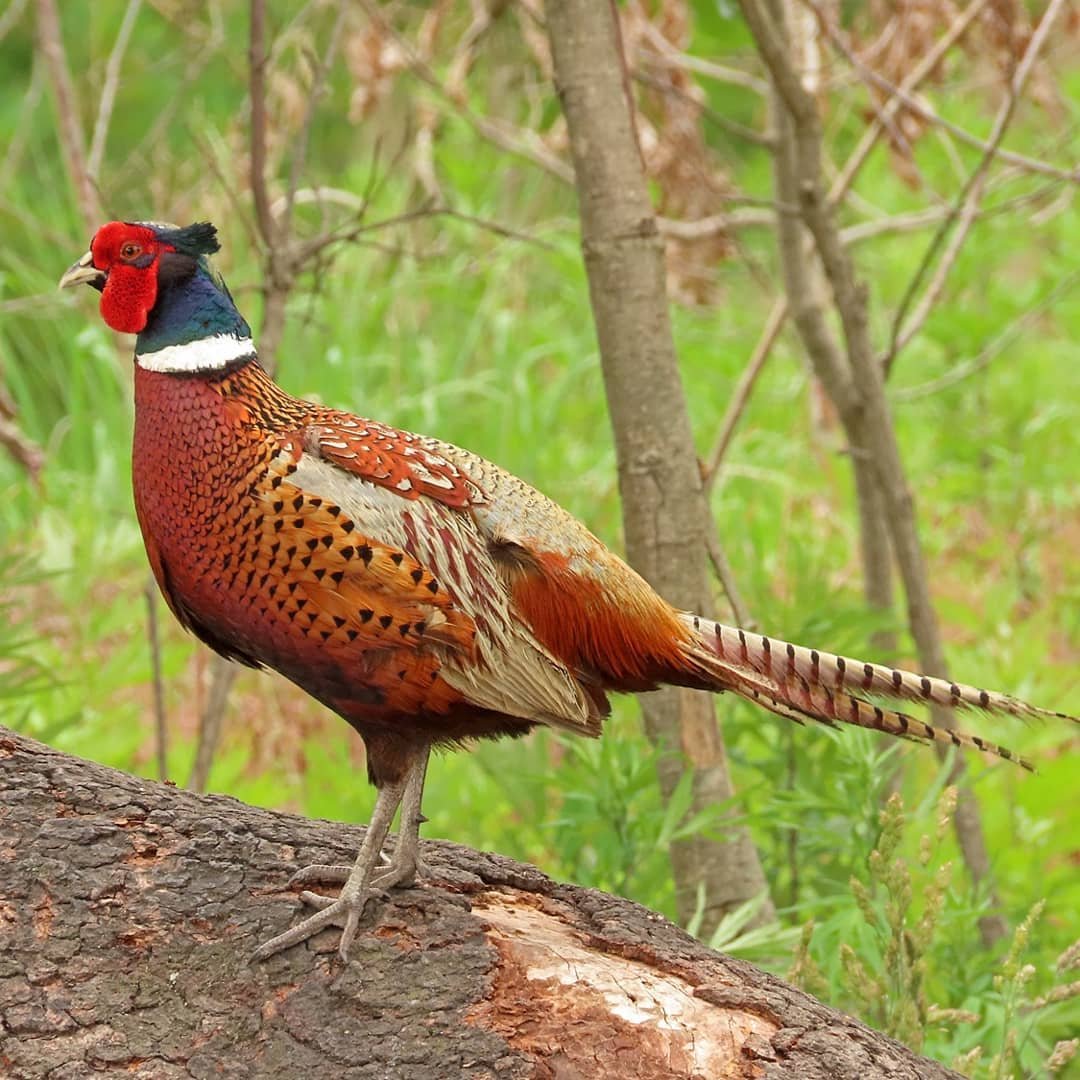
On the other hand, hens have duller light-brown feathers and darker barred plumage on their wings.
Both have signature white rings around their necks.
Red Golden Pheasants
These beautiful birds are bred for ornamental purposes more than for meat production.
As the name suggests, male pheasants have a red and yellow body, and a yellow and black cap. They also possess a light greenish ring around their eyes.
But females boast a brown body with a buff throat and a buff face with a brown ring around their eyes.
Siamese Fireback
I like this breed because of its large size.
You can recognize males with gray plumage and black crest feathers. They also have crimson caruncles and legs.
On the other hand, females have brown with blackish wings and tails.
Setting Up a Pheasant Habitat
Space Requirements
Pheasants also need shelter like quails do.
Provide 0 – 6-week-old chicks with floor shelter or coverage of 1 square foot per bird. You also have to separate the feeder and waterer space for the birds.
Count your chicks and calculate 1 linear inch per bird for feeders. And offer a 1-gallon fountain per 100 birds.
When chicks reach the 6th week, manage 2 3-gallon fountains.
After 6 weeks, you need to arrange a spacious aviary pen for pheasants. The enclosure of 75 X 150 X 6 feet can handle 400 – 500 pheasants.
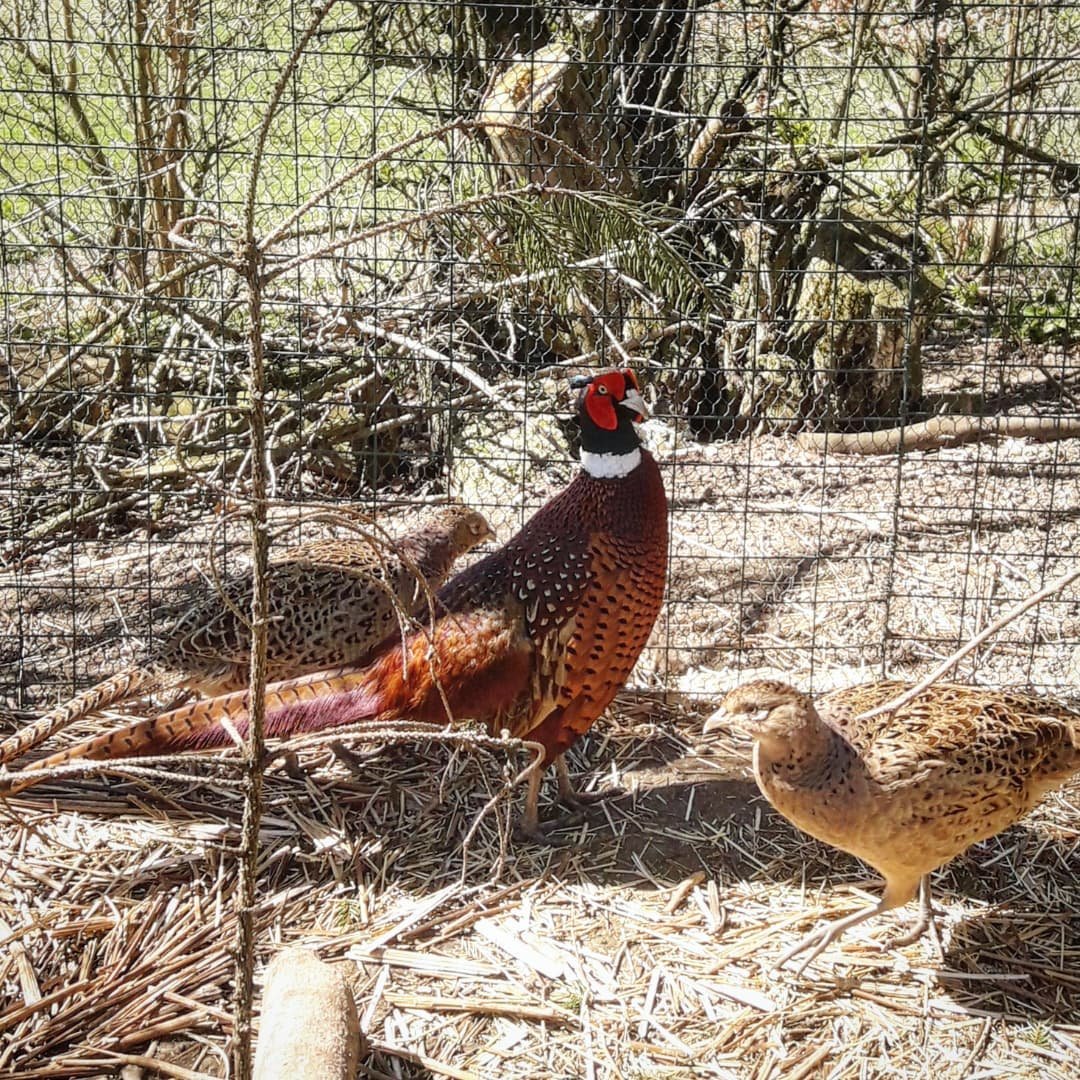
It would be great to have a 200-300 square feet pen, with a floor made of anything from concrete and earth to a wooden floor.
Each adult bird requires at least 25 feet.
Housing Options
You have to put pheasant chickens in the brooder until they are 6 – 8 weeks old.
The brooder must be draft-free, warm, and have access to fresh water. To make it warm, you can set up heat lamps or a brooder stove and maintain 95 degrees Fahrenheit for the first week.
And reduce by 5 degrees F each week. I suggest you use four 250-watt heat bulbs for up to 250 chicks.
To make a standard brooder, you can measure an enclosure with 12 feet X 12 feet X 18 inches. And add 2 – 3 inches of bedding from clean absorbent litter, for example, straw.
Don’t use tiny wood shavings, as chicks can eat them.
Also, place feeds and waters around the heat lamp.
As chicks become juveniles or adults, you can make outdoor pens with protection.
If possible, build a pen with 400 to 600 square feet of space to prevent overcrowding and cannibalization. Also, an outdoor pen should have greens or natural vegetation for pheasants to hide or play.
You can grow some cover crops with 4 – 5 inches of growth first if the land is bare.
Besides, the setting must be free from predators like cats and hawks.
Like quails, peasants are also cold-sensitive, so you need to put your birds inside the warm setup or building. If the pen is portable, it becomes effortless for you.
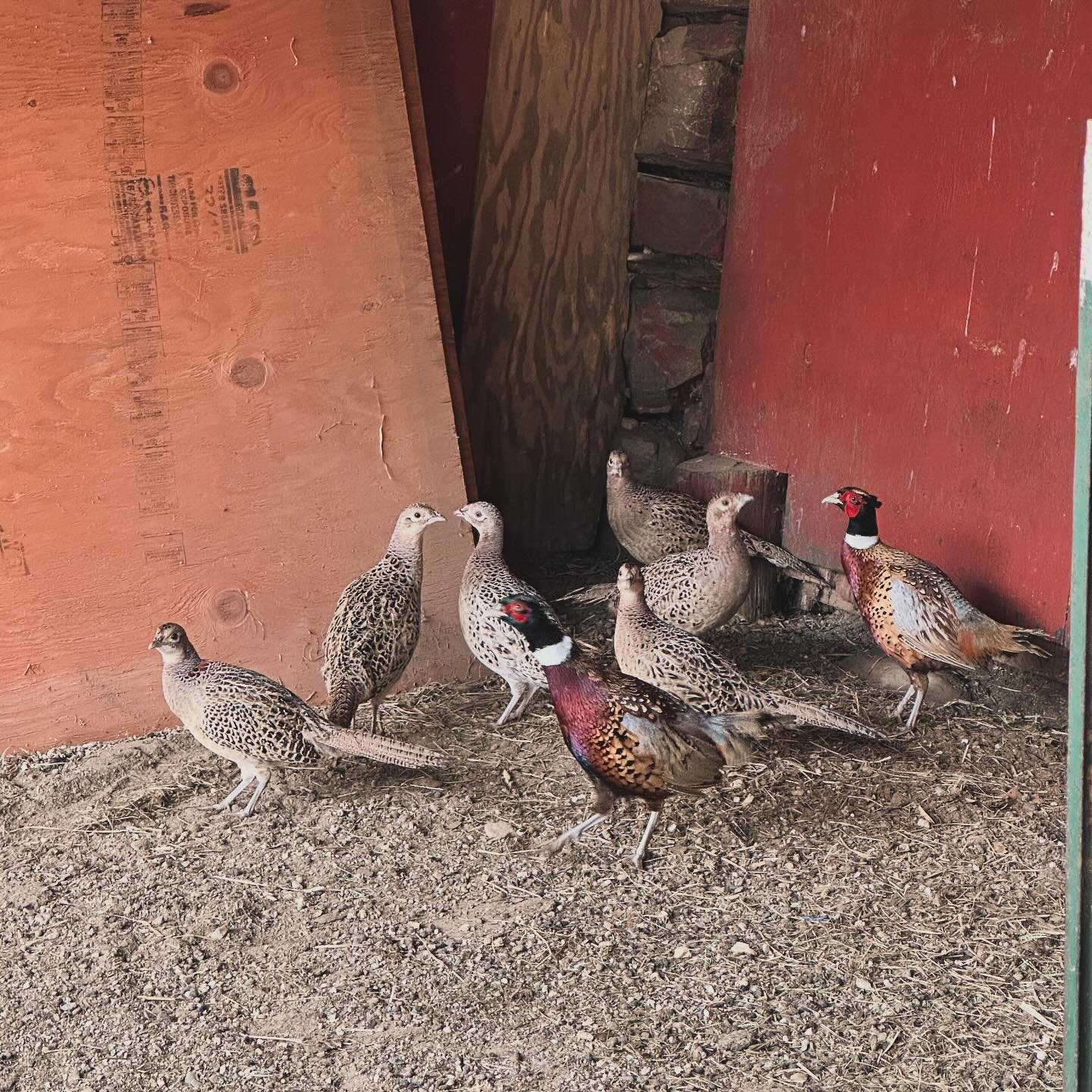
I don’t suggest you throw your birds in the chicken coops, as this can increase the risk of spreading chicken diseases to pheasants.
Fencing and Predator Control
While building an aviary pen, you need to use strong and sturdy fencing materials such as wire mesh, chicken wire, and netting.
No.9 wire also works fine.
Foxes and raccoons often dig under the bar, so you need to secure the pen with wire and hog rings. Solidate the wire under the ground 6 inches deep.
You can also assign your German Shepherd to guard your flock.
Feeding and Nutrition for Meat Pheasants
Pheasant chicks require more protein than chickens. So, you need to ensure the nutrients your birds receive are enough.
- Starter Feed (0-6 weeks): High protein (28-30%)
- Grower Feed (6-12 weeks): Protein (22-24%) for muscle growth
- Finisher Feed (12+ weeks): Balanced diet to enhance meat quality
If you’ve recently purchased chicks, feed them in a flat container for a few days to a week. Then, only provide them with a feeder and waterer.
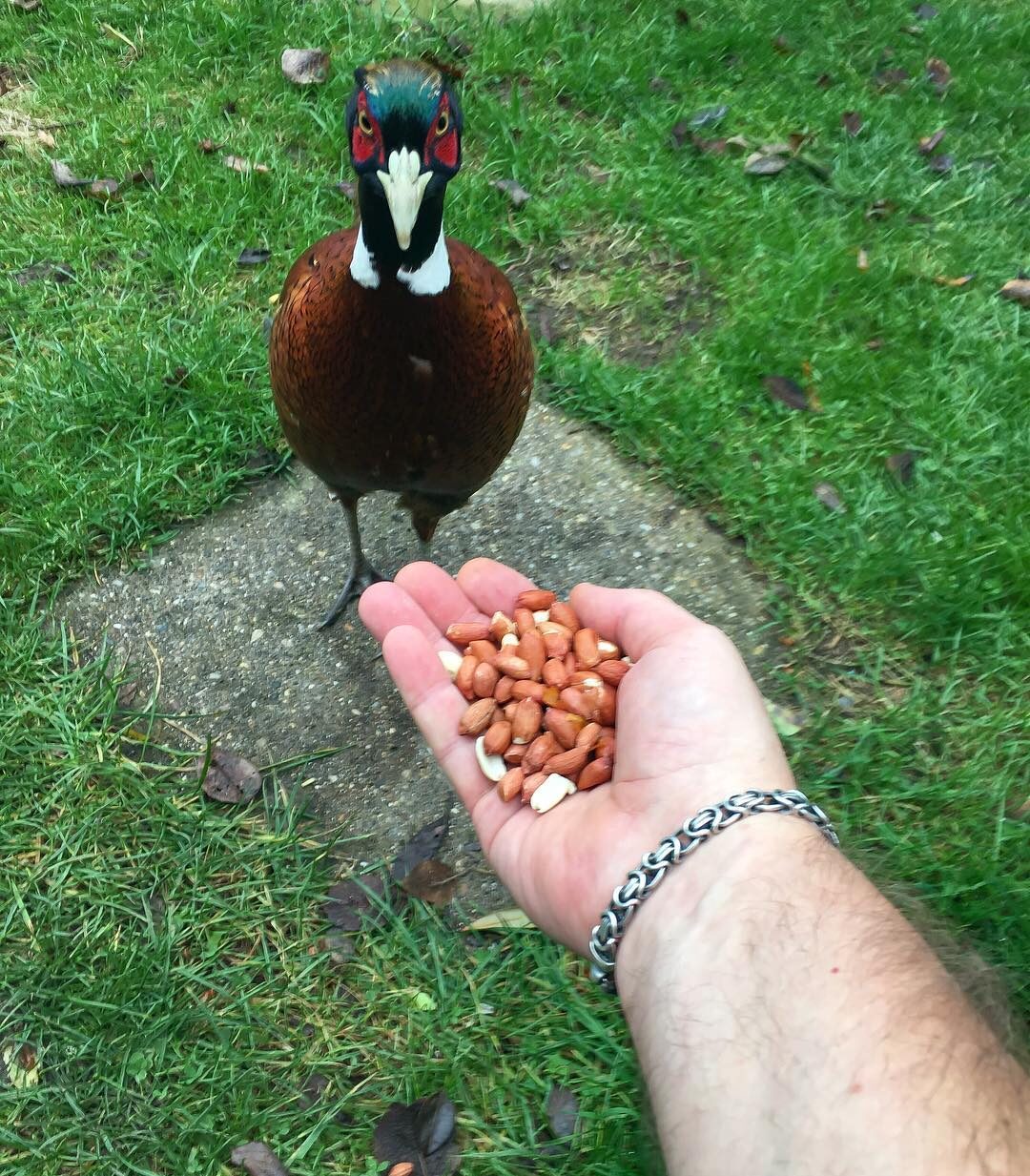
Don’t offer chicks chicken starter. Feed them game bird starter or commercial turkey starter instead.
You can give them medicated feed if the weather is hot and humid.
I have noticed that my 7-week-old pheasant can eat around 2 pounds of feed. This will be more important in giving nutrients when pheasants mature at 18 weeks.
The adult pheasants can eat everything from grains to small insects on a farm or homestead.
You can feed them grains such as waste corn, wheat, sorghum, buckwheat, barley, oats, and sunflowers. They also enjoy seeds from legumes, smartweed, ragweed, crotons, and burdock in their natural habitat.
Besides fruits and leaves, pheasants also gulp small lizards, voles, and tiny insects.
Managing Pheasant Health
Respiratory infections, parasites, and nutritional deficiencies are not new to poultry world and pheasants are also no exception.
They have to deal with avian influenza, blackhead, coccidiosis, and roundworms. So, you must keep the pen and habitat of pheasants clean and sanitized.
What more can you do about pheasants? You can make a spacious shelter so the flock won’t feel cramped due to overcrowding.
Overcrowding leads birds to cannibalism. Feather pulling is one of the visible symptoms of stress.
So, you need to set up proper ventilation and provide hiding areas to reduce aggression.
Conduct regular health checks, vaccinations, and reduce noise and human disturbance.
Breeding Pheasants for Continuous Meat Supply
Pheasants often breed late February or early March, and their breeding period extends through mid-May.
If you ask me about the breeding ratio, I will say an ideal ratio is 1 male: 5-7 females. But that doesn’t necessarily true. Some roosters are heavily fertile and can take care of 10-16 hens per rooster.
The breeding roosters, 1-year-old or 2-year-old. Keepers can use them until they are 3 or 4 years old.
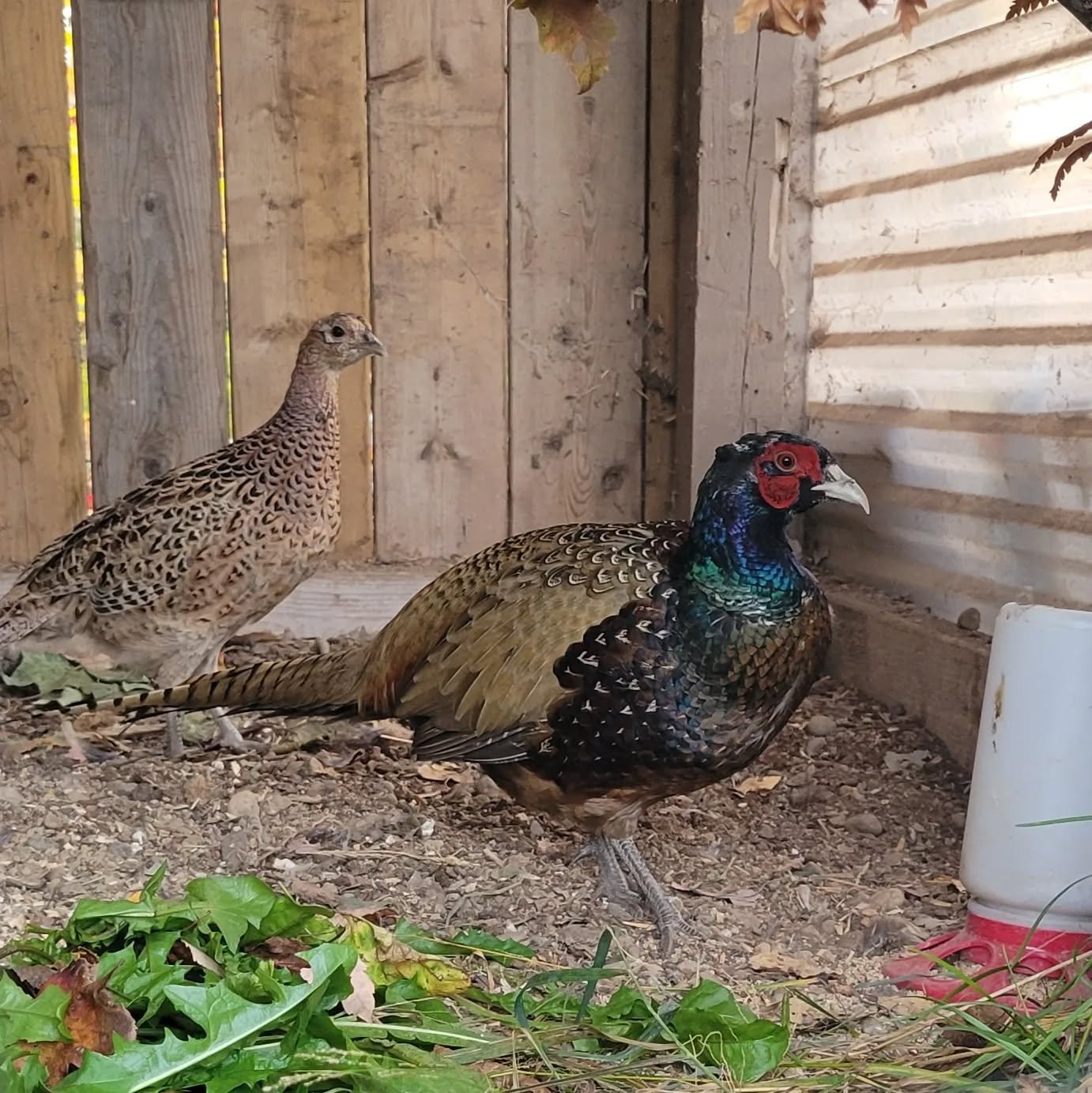
Before the breeding period, make sure you feed a 20% protein breeder diet for a month.
Don’t give hens grains but pelleted feed instead. And you can offer crushed eggshells or oyester shells for free choice calcium grit.
I have kept Ringneck pheasants, which lay 50- 60 eggs during the spring and summer seasons. If you have a large number of flocks, you need to pick eggs 4 to 6 times daily.
I suggest you store eggs between 58 and 60 degrees.
Pheasant hens make a good incubator, brooder, and an excellent mother. But you cannot let them sit on their eggs and wait for them to move if you want to breed pheasants commercially.
In the incubator, you can expect an average of 75% hatch.
Choose eggs that are only 11 days old and not older than that. You can successfully hatch pheasant eggs within 24 days of incubation.
Harvesting and Processing Pheasants for Meat
You can butcher pheasant flocks once they are 16-18 weeks old.
The pheasant roosters I have raised weigh 2 – 3 lbs, and hens around 2 lbs, which are quite good for market weight.
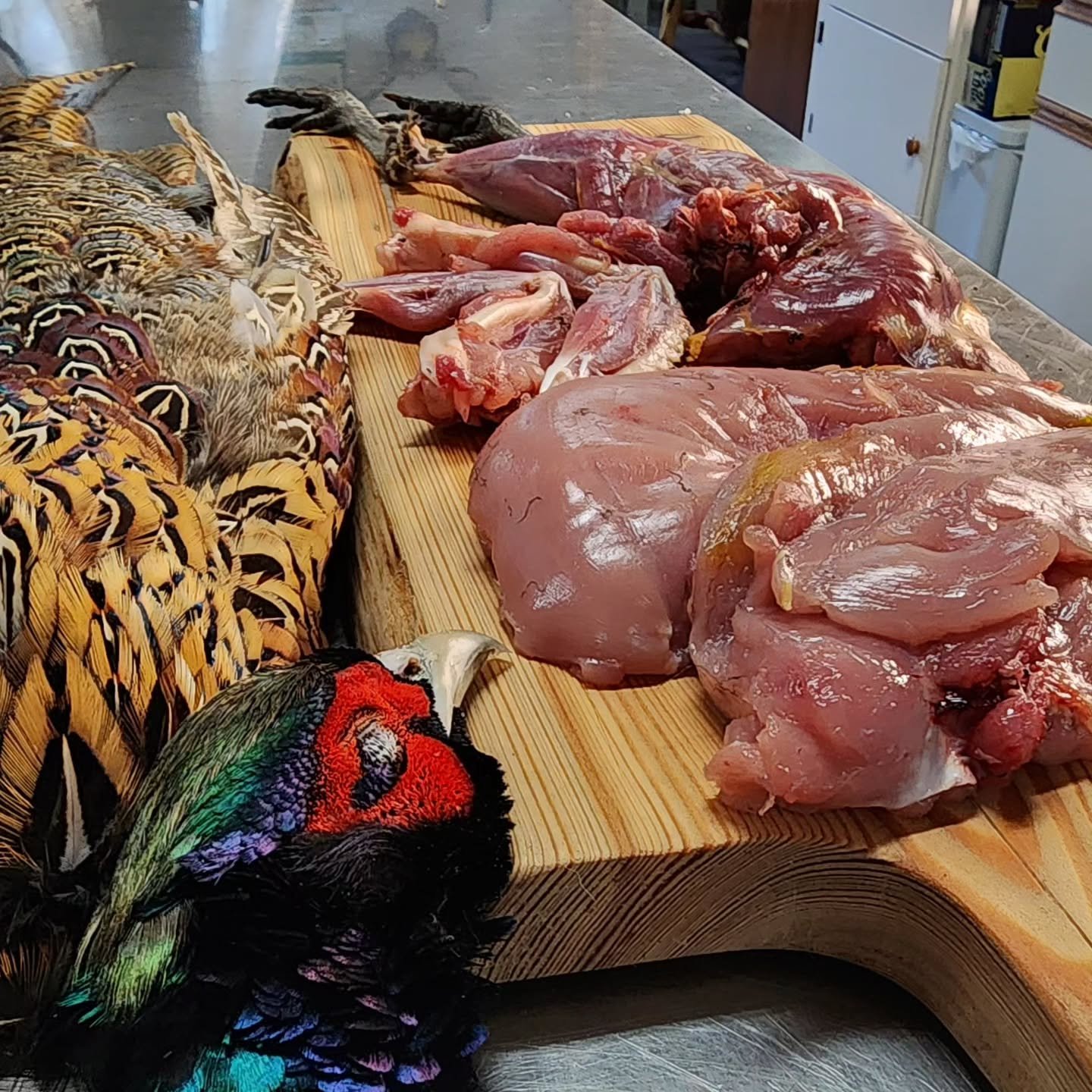
To process the pheasants, you need to follow the steps below:
- Step 1: Skin the bird: Unlike chickens, you need not pluck the feathers. Only you have to rip off the peacock’s skin feathers attached. It’s super easy, you only need to pull outward the skin while handling the bird in the middle. Then, twist and pull off the head, wings, legs, and tail feathers. This time, you have enough energy to do that.
- Step 2: Gut the bird: Make a sharp cut between the stomach and the rear of the bird and rip off the cut to remove the guts. You can insert only two fingers.
- Step 3: Wash the bird and clean the feathers: Go to your sink and place a paper towel in it, and soak it. Now, wash the bird and clean the feathers, which will accumulate on the towel.
- Step 4: Preserve birds for later use or start cooking: As soon as you finish cleaning pheasants, you are free to cook. But I suggest you pack the bird in a plastic bag with water and salt. And keep the bag in the refrigerator or freezer for 2 – 3 days. You can surely find the pheasant’s meat improved and less gamey.
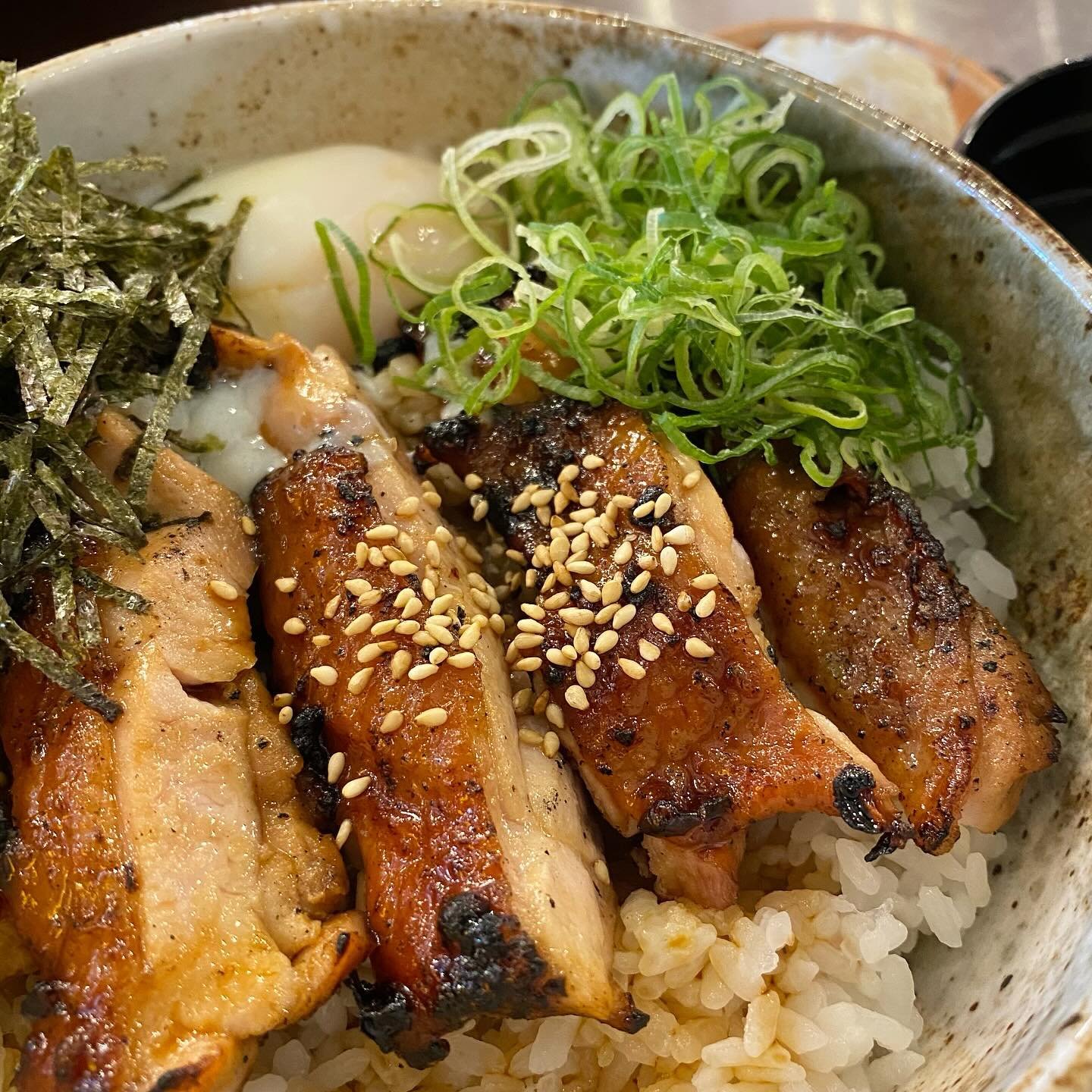
Final Thoughts
I’m happy to get more meat from pheasants than from quails. But quails are more profitable in egg production.
If you want some recipes for pheasants, I suggest you try herb-marinated pheasant skewers, pot-roasted pheasants, and smoked pheasant and root vegetable stew.



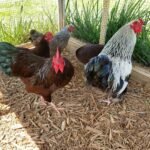



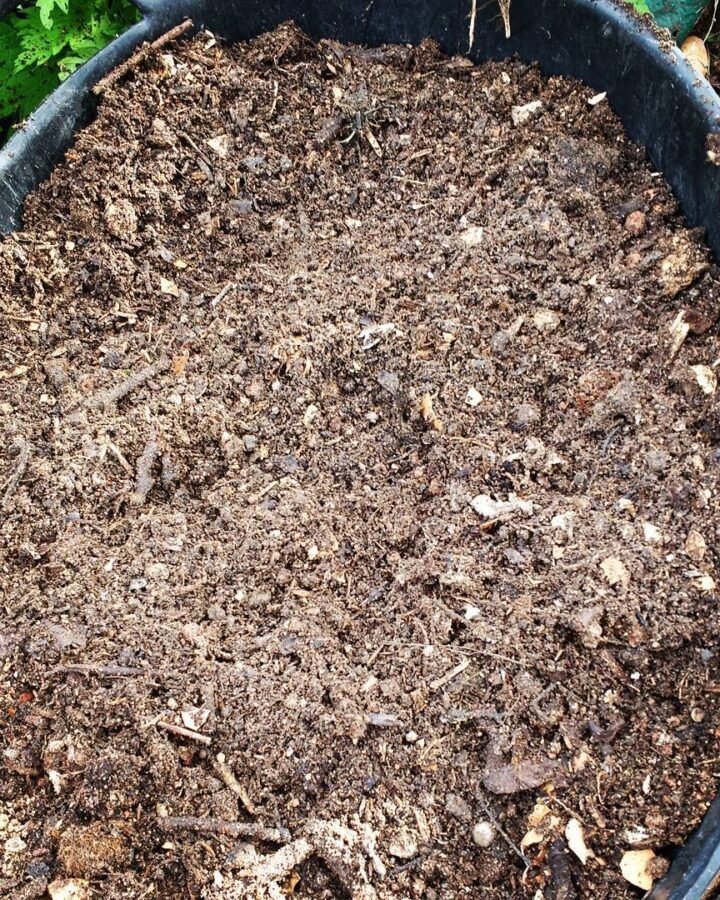

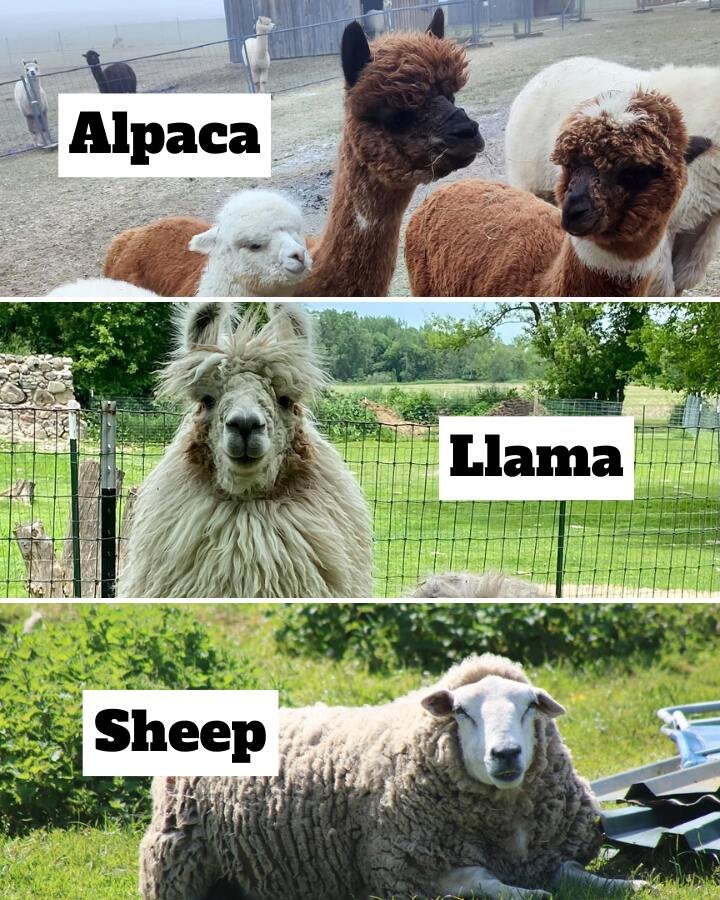
Leave a Reply